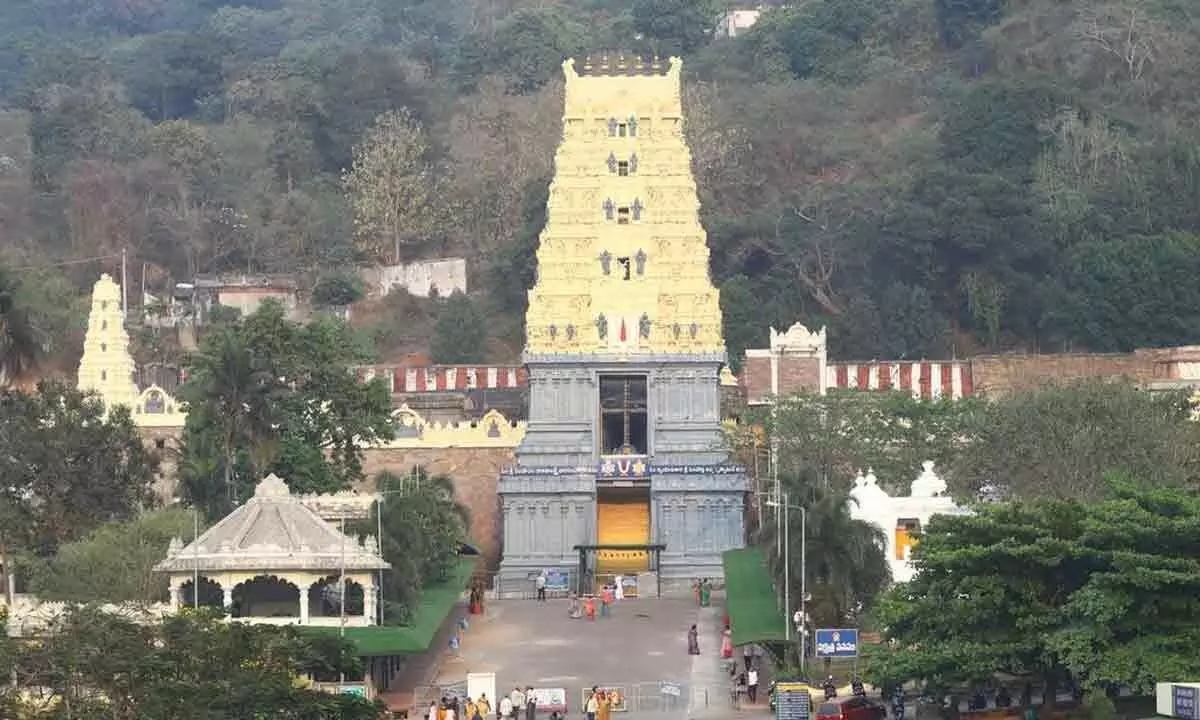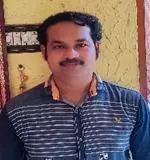Live
- HMPV Outbreaks Spark Global Health Concerns: What You Need to Know
- Gautam Gambhir Faces Criticism Over Tactical Errors in Australia Tour
- CM Revanth Reddy Announces Surprise District Tours Starting January 26
- Telangana's TOMCOM Invites Applications for Driver Jobs in Germany
- Calcutta HC rejects plea by rights body for stall allotment at Kolkata Book Fair
- Bengaluru Beer Prices to Rise by Up to 20% Starting January 20
- My Fans Are Like Disciplined Soldiers: Nandamuri Balakrishna
- Adani Group raises Rs 4,850 crore after selling 13.5 pc stake in Adani Wilmar
- "Jogulamba Gadwal Health Officials Assure Public: No Panic Over HMPV Virus".
- "Charity and Annadanam Program Held on BOSS Hanumanthu Naidu’s Birthday".
Just In

A view of Sri Varaha Lakshmi Narasimha Swamy Devasthanam
This year, Chandanotsavam is celebrated on May 3. After two years of break due to the Covid-19 pandemic, the annual festival is expected to draw lakhs of devotees to the shrine of Simhachalam Devasthanam
Akshaya Tritiya is an auspicious festival celebrated across communities in the country. But for Lord Sri Varaha Lakshmi Narasimha Swamy at Simhachalam Devasthanam in Visakhapatnam, the occasion is all the more special.
As it is on that day the Lord offers 'Nija Rupa' darshan to a sea of devotees who congregate at Simhachalam to get a glimpse of His 'real avatar'. It is only on that day the sandalwood paste covered 'kavach' (shield) would be taken off and devotees would get to view His original 'Avatar' amid brimming queue lines.
Lakhs of people descend in droves to view the Varaha avatar of Lord Vishnu during 'Chandanotsavam' (also known as Chandanyatra) wherein Lord Narasimha could be viewed without the shield of sandalwood-smeared kavach.
This year, Chandanotsavam is celebrated on May 3. After two years of break due to the Covid-19 pandemic, the annual festival is expected to draw lakhs of devotees to the shrine.
Located 300-mt above sea level, Simhachalam is one of the ancient temples located in Visakhapatnam and one among 32 temples of Lord Narasimha in Andhra Pradesh.
A significant spiritual centre of Vaishnavisim that dates back to the medieval period, the earlier traces of inscription at the temple traces to 11th century CE. The architecture that exudes a blend of Kalinga and Chalukya style of the shrine mirrors a fortress from outside endowed with five gateways and a few outer courtyards.
The moolavar of Varaha Narasimha was covered with crests of earth. Legend has it that Prahlada was the first to build a temple for his favourite God and was able to accomplish it after his father, a demon king, Hiranya Kasyapa's death in the hands of Lord Vishnu who took a boar incarnation (Varaha avatar) to put an end to his life.
At the end of Krita Yuga, the temple started decaying due to neglect. But at the onset of another life cycle, the Lord was discovered once again by Emperor Pururava of the Lunar Dynasty when he was riding a chariot over the hills. Mysteriously, his chariot was pulled towards Simhachalam. It was then he unearthed the idol lying in crests of earth, consecrated it after renovation. Back then, a celestial voice directed Pururava to cover the deity with sandalwood paste and the shield should be removed only once a year on the third day of the Vaisakha month. Following akasavaani's instructions, the King smeared sandalwood paste over the deity, worshipped it with fervour and built a temple all over again.
Although it is difficult to trace the exact age of the temple, it has inscriptions that date back to 1098 AD.
Except on 'Chandanotsavam', the deity is covered with sandalwood paste for the rest of the year.
As a part of the festival, 'Suprabhata seva' will be performed by a team of priests to wake up Lord Narasimha Swamy and special rituals will be conducted in the wee hours of the day.
After removing the layers of sandalwood paste from the idol, the Nija Rupam will come to the fore. A small quantity of sandalwood paste mixed with Sughanda dravyalu (aromatic substances) will be placed on the chest of the Nija Rupam idol.
According to the temple tradition, the hereditary trustee of the temple P Ashok Gajapathi Raju will have the first darshan. Later, devotees can have Nija Rupa darshan till 11 p.m of the same day.
'Sahasra Ghatabhishekam' is performed at night and the first phase of sandalwood paste is offered to the God. With this, Swamy appears resumes his 'nithya roopam'.
Sandalwood is offered in four phases during Poornima (full moon) days, including Jyeshta, Ashada and Sravana Poornima.
Keeping the crowd in view, Simhachalam temple Executive Officer MV Surya Kala mentioned that 'Chandanotsavam' is celebrated at the shrine after a gap of two years. She opined that there is a possibility of a huge number of devotees congregating at Simhachalam. "All arrangements are in place for the same. Apart from giving top priority to the common devotees, special arrangements are also made for the VVIPs and VIPs," the EO informs.

© 2025 Hyderabad Media House Limited/The Hans India. All rights reserved. Powered by hocalwire.com







